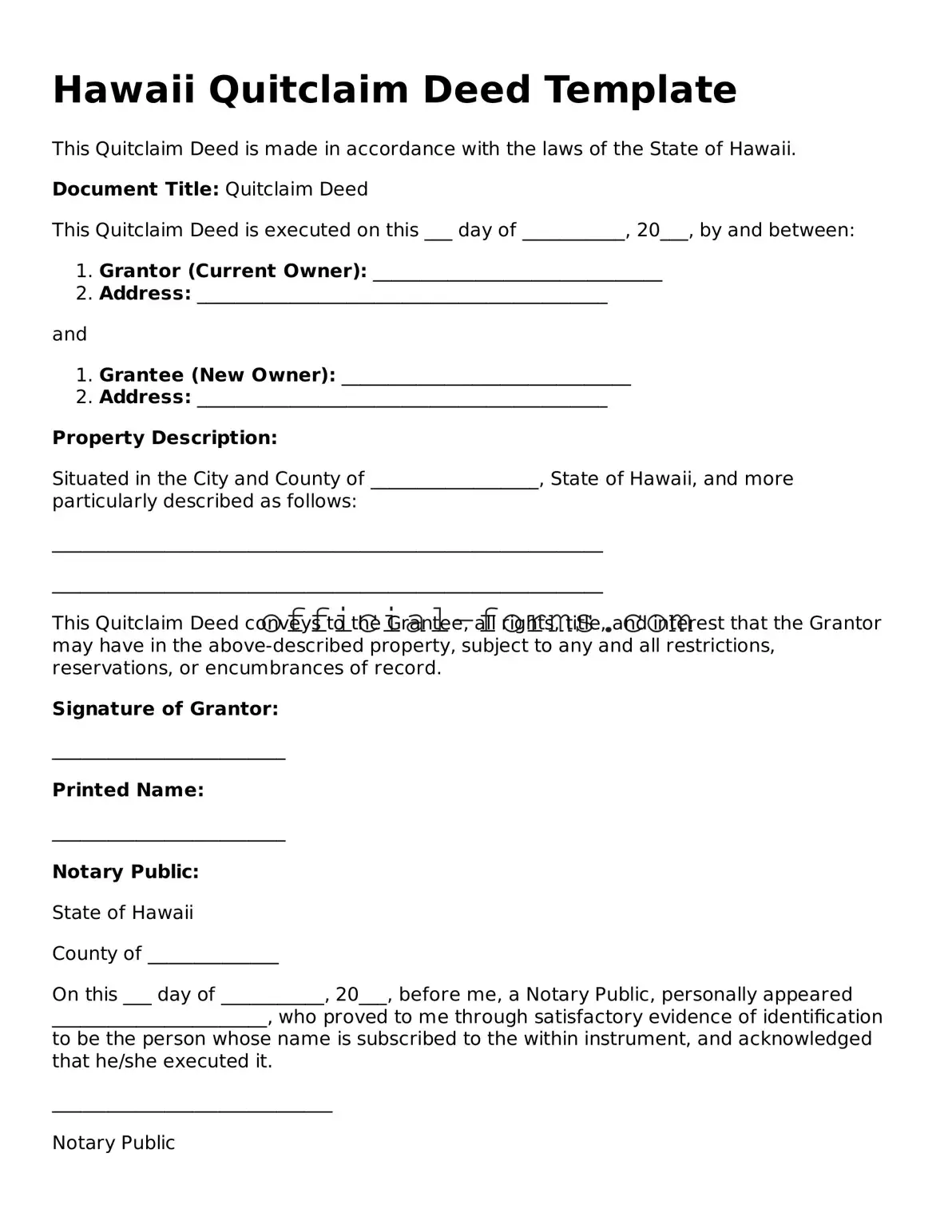The Hawaii Quitclaim Deed is an essential legal document that facilitates the transfer of property ownership in a straightforward manner. Unlike other types of deeds, a quitclaim deed allows the current owner, known as the grantor, to relinquish any claim they may have on the property without guaranteeing that the title is free of defects. This means that the new owner, or grantee, receives whatever interest the grantor holds, which may be complete or partial. The form typically includes vital information such as the names of the parties involved, a description of the property, and the date of the transfer. While it is often used among family members or in situations where the parties trust each other, it’s important to understand that a quitclaim deed does not provide the same level of protection as a warranty deed. Therefore, potential grantees should conduct their due diligence to ensure they are aware of any liens or encumbrances attached to the property. Understanding the nuances of the Hawaii Quitclaim Deed can help individuals make informed decisions when navigating property transfers in the Aloha State.
